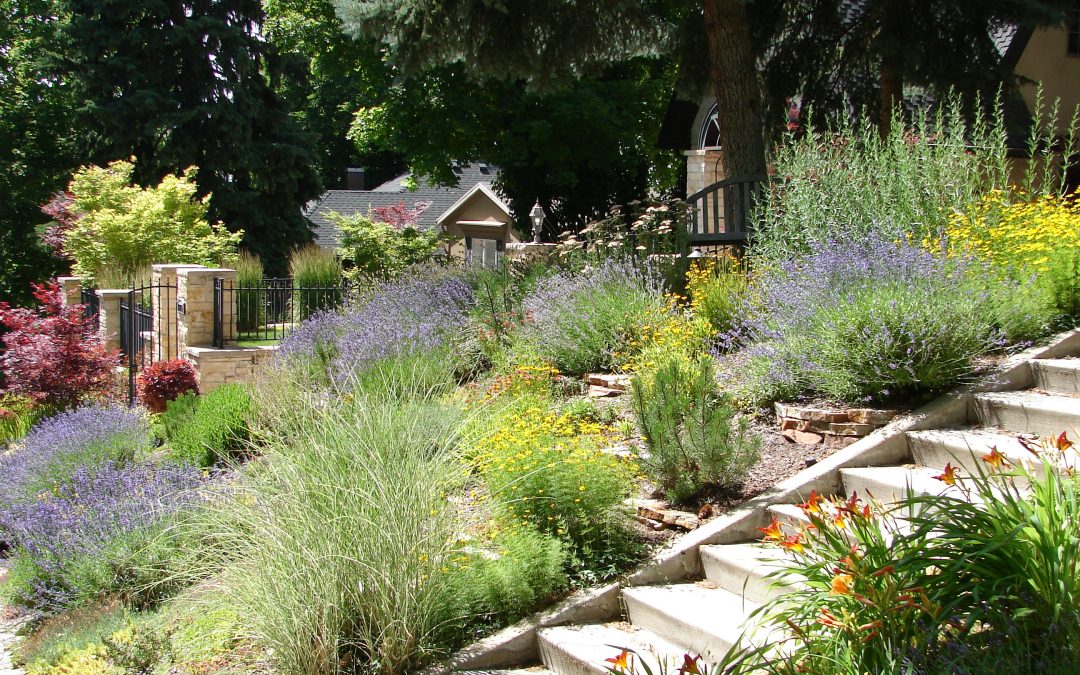Southwest Colorado is undoubtedly a beautiful place to call home. We live at an intersection of landscapes and climates, where arid desert overlaps rolling mountain foothills that rise up into impressive alpine summits. This lovely and dramatic corner of the world can certainly offer its challenges too. Unlike in more humid and lush regions, water is a precious commodity in the Southwest. Watering a grass lawn all summer can get expensive and is ultimately a strain on regional resources. With Earth Day this month, we want to highlight some xeriscaping ides!
More and more, we at Durango North Star have loved seeing the creativity that has arisen from this particular challenge. It has been remarkable to watch homeowners transform their impractical grass lawns into beautiful desert-scapes, blanketed not only in rocks and cactus but also in gorgeous and eye-catching regional flowers and other flora native to this unique environment.
Here are a few tips we have collected over the years and would love to share with you as you consider the costs of watering the grass all summer or creating your own xeriscaped lawn.
- Throw out the misconception that Xeriscaping means only dull rocks and prickly cactus. On the contrary, “xeriscaping” simply means creating a landscape that can thrive on less water. With a little research and maybe even some professional help, you can transform your grassy lawn into a lovely oasis that is not only pleasing to look at but is also better for the environment and easier on your monthly bills.
- But don’t completely throw out the idea of using rocks and cactus. Just adding a few small rock gardens as accents across the lawn can save on overall square footage that needs water and can add an eye-catching point of interest to make your lawn stand out. Similarly, incorporating a few native cactus species into your lawn can also create a diverse ecosystem and aesthetically pleasing view.
- Look around! Southwest Colorado abounds with natural life, flourishing and healthy despite lower precipitation levels. There is a world of flora native to this region from which to draw inspiration. Your lawn can still be bright and beautiful when you ditch the bluegrass and start filling in with plants that already thrive here.
- Watch where the sun falls. The natural sun exposure in your lawn can help you decide how to layout your xeriscaping features. Place greenery and flowerbeds where they can be sure to have plenty of basking light, and rock gardens or other non-living features, in those areas that are more shaded.
- Consider installing a drip irrigation system rather than using a sprinkler or water hose. Drip irrigation systems allow you to focus only on those areas of your lawn that actually need water and, because they water the soil directly, there is little to no water waste from evaporation or runoff. This option can be costly to install, however, the long-term benefits are certainly worth reviewing.
- Use mulch in your planting beds. This is a great, and fairly affordable, way to reduce evaporation and get the most efficiency from your water. Beyond water conservation, mulching can also help regulate soil temperatures, which is especially important in our mountain environment. Additionally, wood and other organic mulches enrich and improve the soil as they break down.
- Invest in a rain barrel. We have seen some cool and creatively camouflaged rain barrels added to a few clients’ lawns, and have seen that it’s a great and affordable way to add to the amount of water you have access to. The next time it rains, you can distribute the water you’ve collected, into those planting beds that need it the most.
The list could go on and on, and we hope to hear about the creative and eye-catching ways you decide to craft your beautiful and eco-friendly lawn.

